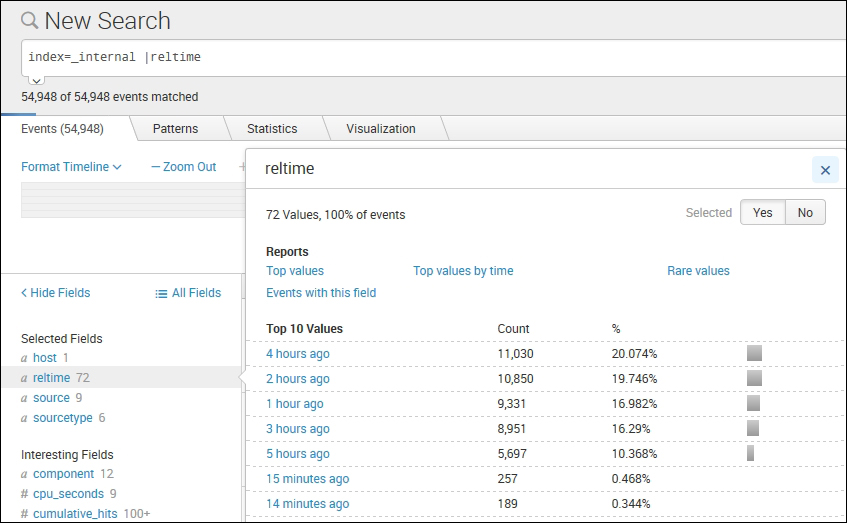The time subset of commands is used to enrich the data with the ability to search based on time and make data more user friendly for analytics and visualization.
The reltime Splunk command is used to create a relative time field called reltime. It shows the time value in a format that humans can read, relative to current time. The time in reltime would appear as 2 hours ago, 3 days ago, 1 month ago, and so on.
The syntax for the reltime command is as follows:
… | reltime
Refer to the following example for better clarity:
index=_internal |reltime

As shown in the preceding screenshot, reltime creates a more user friendly and human readable format output of relative time, which can be used in analytics and visualizations.



